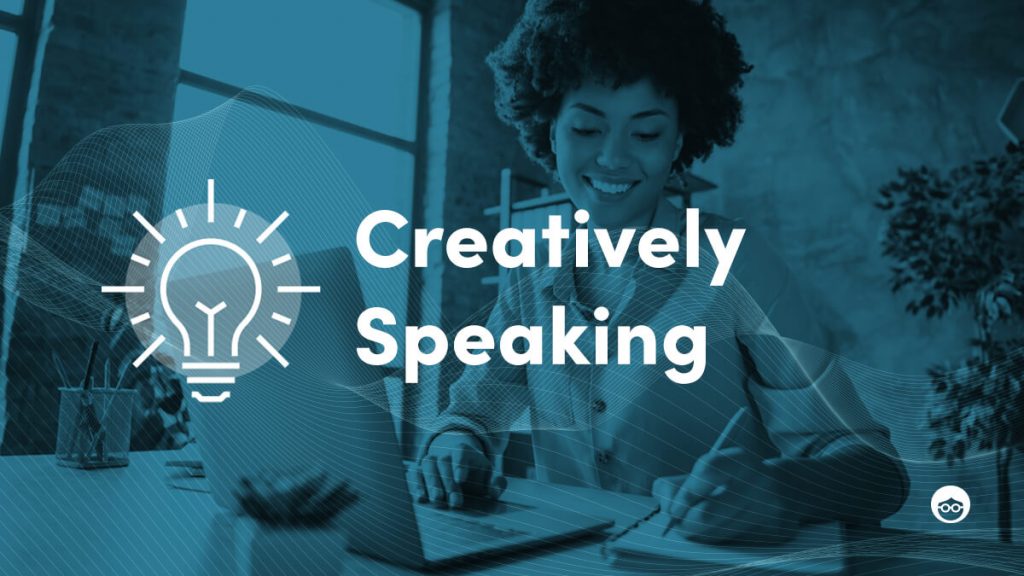5 Creative Advertising Trends Seen in 2021 (So Far)

Between the global pandemic, the world going into lockdown, and the race to find a vaccine – it’s certainly been an eventful twelve months or so. We watched as the marketing world adapted to the “new normal”, forced to rethink audience, delivery, and strategy. While marketers and advertisers are already accustomed to working in a fast-paced industry, it still left many seasoned professionals scratching their heads.
The global crisis has driven technology and innovation, from online healthcare to e-commerce, as well as the social media platforms and video communication products that now shape our world and keep us busy, sharing, and connecting. It also had a huge impact on creative advertising trends, with ad spend across top marketplaces and social media platforms increasing by 31% year on year in March 2021. While the pandemic reduced face-to-face opportunities to reach customers, it helped marketers engage new audiences, reduce costs, and develop a clear and concise brand online.
So far, 2021 has been a breath of fresh air, bringing a collection of new and exciting marketing and advertising trends with it. Ready to get inspired with some original and effective ideas for your next advertising campaign? Here are the top 5 creative advertising trends we’ve seen in 2021 so far:
1. AI and Programmatic Advertising
Embed example: What is Programmatic Advertising?
The concept of AI has been popularized in films and television over the past decade and not surprisingly it is now at the forefront of advertising. Artificial intelligence (AI) or Machine Learning (ML) is technology that can respond to real-time data and analyze consumer behavior and patterns. It essentially takes the guesswork out and identifies consumer trends and preferences better than humans ever could.
Programmatic advertising is also big this year. It involves using AI and ML to buy and sell digital advertising space. This means you can connect with a large audience across multiple platforms in a split second. It is driven by data in real-time and allows advanced audience targeting, ensuring the right people see the ad and you get the best ROI. Experts are predicting that 88% of all display advertising will be done via programmatic by the end of 2021.
The California-based non-profit, Amanda Foundation executed an impressive programmatic campaign featuring animals up for adoption. Different animals were advertised on different screens, based on the browsing data of those targeted. It’s pretty clever stuff and an exciting look at how AI is allowing marketers to create dynamic yet personalized content.
When thinking about AI in marketing, it’s important to remember the three Ps: patterns, preferences, and predictions. One company using this acronym expertly is Automated Creative, which has programmed AI and machine learning to creatively respond to consumers. The AI automatically creates specific ads based on conversations happening on their social media platforms, then tracks their performance and re-generates them accordingly.
2. Conversational Marketing
We’re living in a customer-centric time, with a lot of marketing focused on the individual. People want a conversation, and who can blame them after the year we’ve had? Chatbots or conversational agents aren’t necessarily new, but they are becoming a must-have for businesses. Over 60% of customers are now willing to exchange their personal data for prompt personalized customer service, and over 80% of businesses are already using chatbots. The gap is closing fast and with good reason. These bots are personalized, polite, and programmed with a wealth of information.
Companies like Drift – a conversational marketing and sales platform – offer AI chatbots for real-time conversations between brands and their customers. Rerouting the traditional CLP model to a fast, cost-efficient, and personalized experience, Drift’s live chat provides excellent 24/7 customer service and improved lead generation while moving customers through the sales funnel faster.
LinkedIn has been innovative with a hybrid mobile and native advertising approach. The platform has launched Conversation Ads, a live chat ad format that allows businesses to ‘choose their own adventure’. The feature involves starting conversations that prompt action, offering a personal and engaging marketing opportunity. It has the potential to generate leads, plus it provides feedback data on the chosen target audiences.
3. Sustainability
We’ve all witnessed how the debates around global warming have turned into real conversations about climate change. Not surprisingly, sustainability and environmental awareness are on the top of the list of qualities consumers often look for in a brand. Brands are following suit, making changes for a better future, and promising customers a minimized carbon footprint and ethical means of production.
Adidas has taken this in stride with their recent advertising campaign, Futurecraft Footprint. The new campaign boasts the lowest carbon emission, high-performance running shoe ever made. With the copy drawing parallels between athleticism and Adidas’ plight to combat climate change, it’s a clever and self-aware step forward for the brand.
With over 79% percent of the population concerned about climate change, green marketing is at the top of advertising trends. In response, brands are changing their business models and their advertising to go with it. Recently Mulberry England has launched an eco-conscious campaign, promising quality over quantity. Mulberry Made to Last showcases the label’s concern and ethical responsibility to produce items that won’t be tossed into a landfill next season. The days of slapping a green sticker on a product are gone. People know better and aren’t just looking for promises – they want implementation and reusability.
4. Vertical Mobile Advertising
The world has gone vertical, and it’s more important than ever for advertising to adapt to this trend. Content is no longer made for the patented 4:7 portrait mode; many wouldn’t remember the last time they had to turn their screen to get that 16:9 landscape ratio just to watch a video. The vertical 9:6 ratio is here to stay, already filling 75% of the screen and 100% when tapped to full.
Marketing expert Lana Mulier explains, “The mobile environment of the 2020s is experiencing a vertical video revolution. The portrait, or vertical, screen format is replacing the traditional landscape, or horizontal, format to become the default for mobile video production and consumption.”
Snapchat first went vertical in 2013, Instagram has since released Stories in full vertical screen format, and last year they introduced Reels. TikTok was the most downloaded app of 2020, with users sharing vertical videos between 15 seconds to 1 minute in length. Facebook and YouTube have adopted the ratio for mobile viewers too. More than 70% of watch time is done on mobile screens, so creating vertical advertising content is paramount. The 9:6 vertical screen is made for mobiles, and the streamlined aesthetic is more likely to grab viewers’ attention. Proven to increase engagement and drive sales, vertical mobile advertising is a huge marketing asset for any business.
National Geographic – which has a huge Instagram following of 166 million – has launched a widely successful campaign for their millions of followers who are still in lockdown or social distancing. They partnered with Hyundai to create the Zion National Park Augmented Reality Experience, an Instagram filter that transports users to a national park with augmented reality. Using this campaign, Nat Geo and Hyundai have gotten the attention of Instagram’s predominantly Gen Z and Y audience, and masterfully used a combination of interactive and vertical video to promote brand awareness and drive backlinks.
5. Interactive Video
The majority of us use our phones daily, and in turn, we see a lot of advertising. People are getting bored, or at the least desensitized. No one is a passive consumer anymore, and passive advertising seems to be losing its touch. More than 82% of Gen Z are skipping or ignoring advertisements on social media altogether. As a result, there are a lot of brands that are upping the ante and actively inviting their audience to engage with them and their products.
Mobile and interactive advertising are a neatly packed and formidable team. Facebook Stories, Instagram reels, and apps like TikTok let brands post funny, informational, or even User Generated Content (UGC). The dating app Bumble seamlessly integrates UGC into their Instagram Reels to start a dialogue between users and raise brand awareness. Ultimately this type of advertising blends in and appeals to the sense of humor and social habits of Bumble’s major target audience.
Startups like Eko understand the changing marketing landscape and want to help companies keep up and better connect with their customers. Eko is an interactive storytelling platform offering choice-driven brand and marketing content. Interactivity for Eko means emotional activity from viewers and an engaged audience.
David Sable – CEO of Y&R communications company – points out, “Eko’s unique interactivity creates brand engagement that enables deep emotional connections with consumers unlike any other platform, and heralds the future of entertainment and marketing.” There’s no doubt that this trend is here to stay, as both marketers and audiences seem to be wanting more.
And that’s a wrap on 2021’s key advertising trends so far! We hope this helps you build a powerful, up-to-date advertising strategy.


